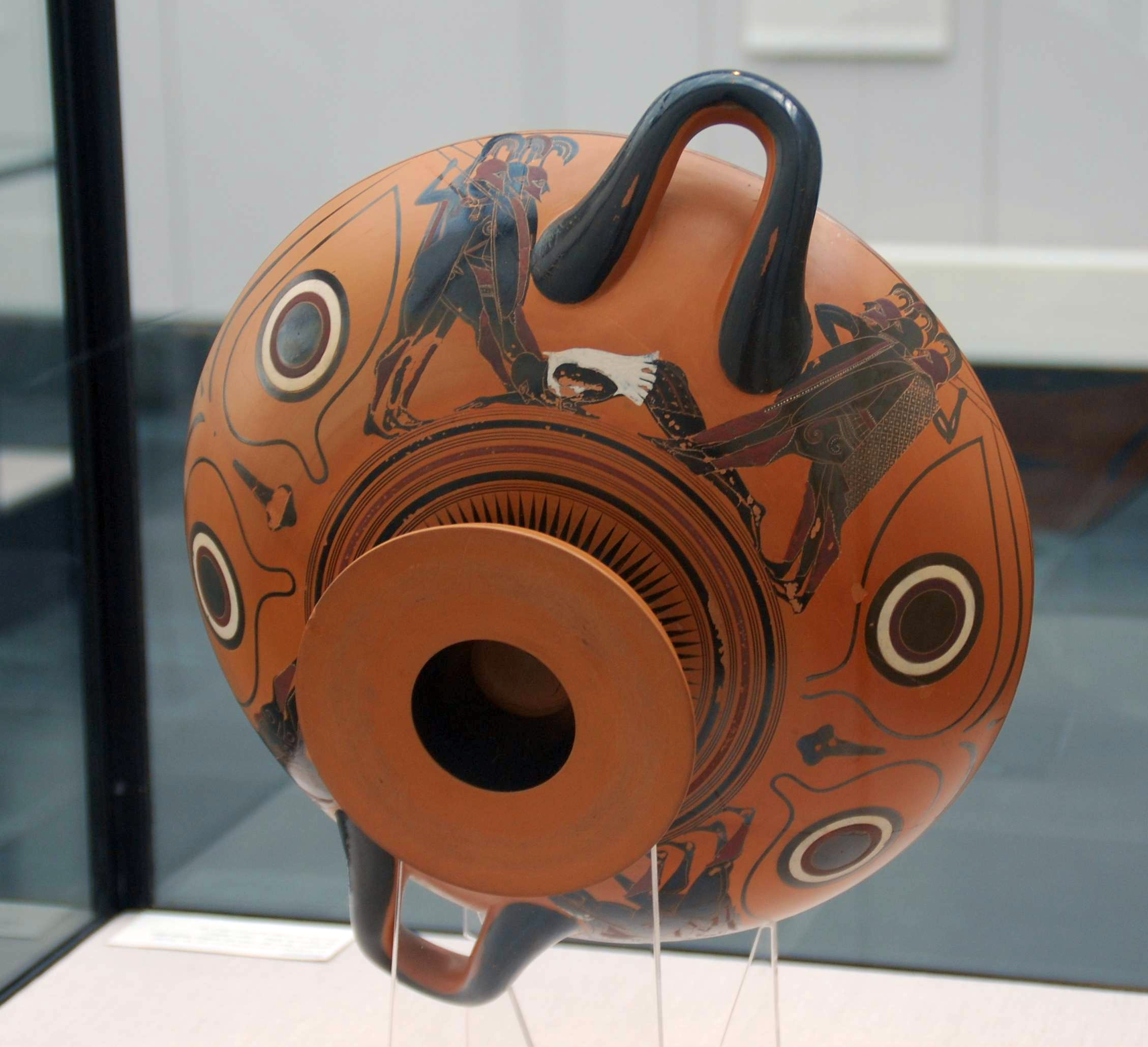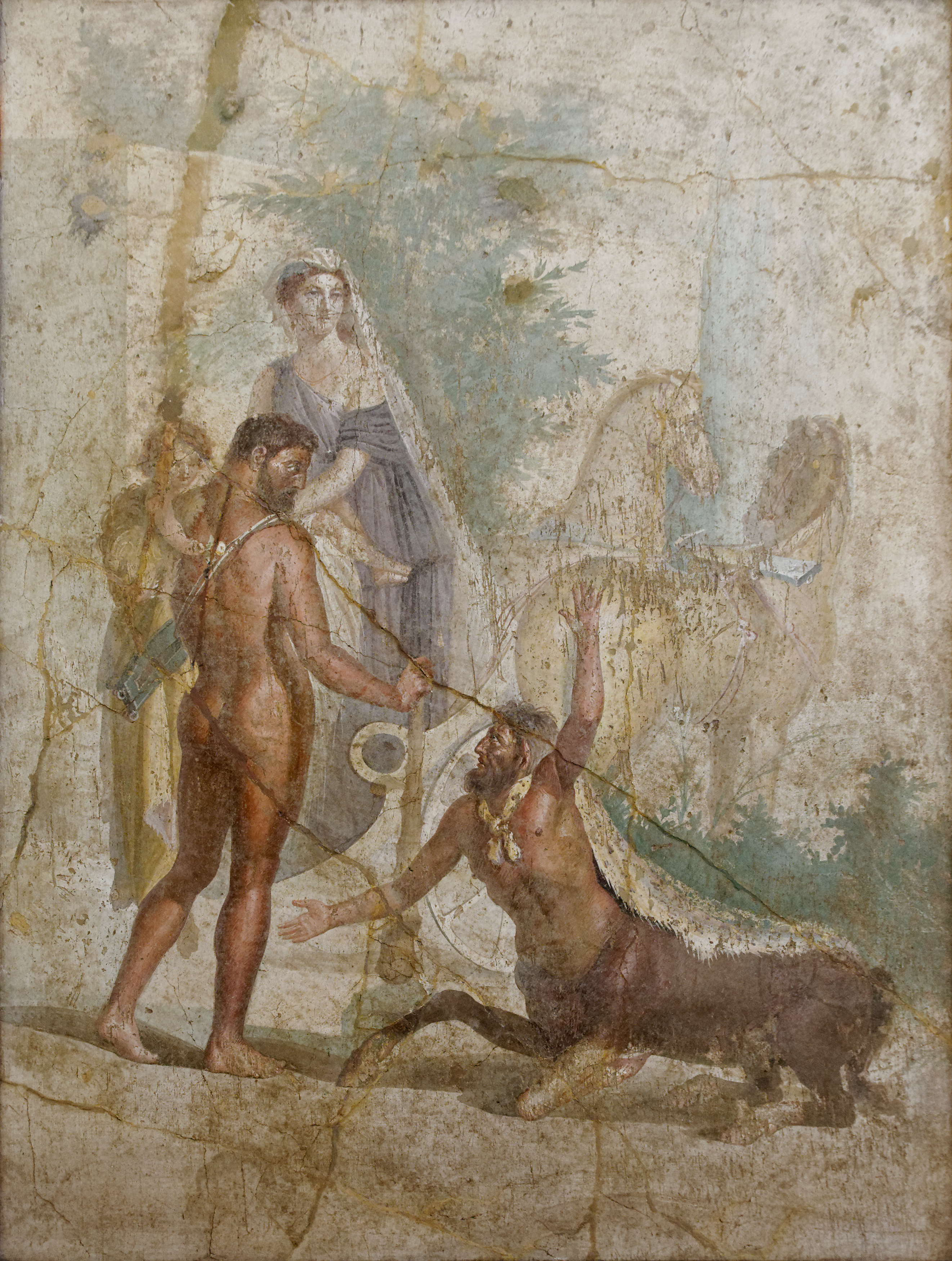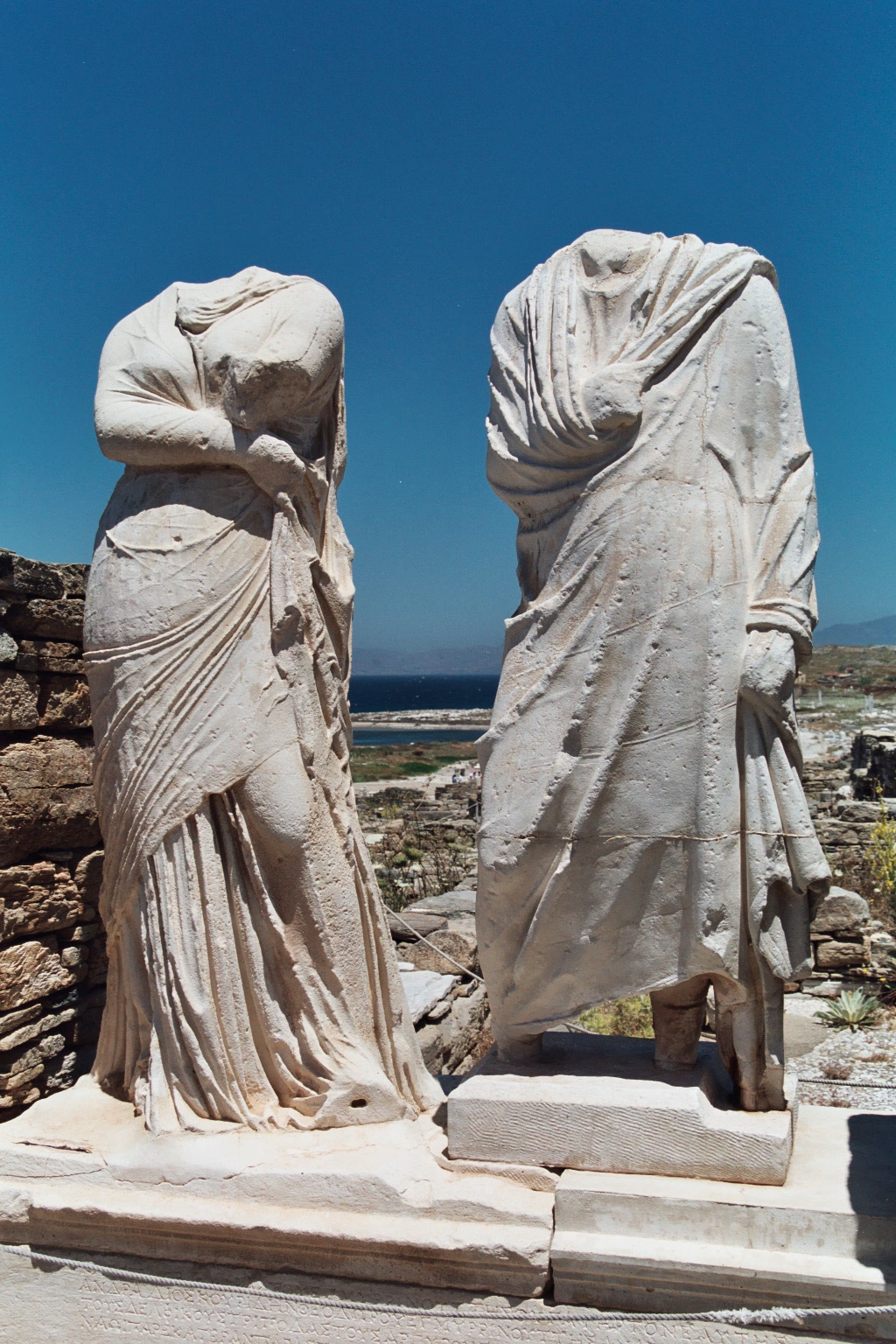|
Lydos
Lydos (Greek: Λυδός, ''the Lydian'') was an Attic vase painter in the black-figure style. Active between about 560 and 540 BC, he was the main representative of the "Lydos Group". His signature, ό Λυδός, ho Lydos ("the Lydian"), inscribed on two vases, is informative regarding the cultural background of the artist. Either he immigrated to Athens from the Lydian Empire of King Kroisos, or he was born in Athens as the son of Lydian parents. In any case, he learned his trade in Athens. Style It is difficult to definitely recognise his work, since he was the centre and main artist of a highly productive Attic pottery workshop. For that reason, many vases are simply described as "in the style of Lydos". Several other individual artists within his circle can be identified, including the Painter of Vatican 309 and Painter of Louvre F 6. These works are quite homogeneous in style, but differ considerably in terms of quality. The style of Lydos strongly resembles that of ... [...More Info...] [...Related Items...] OR: [Wikipedia] [Google] [Baidu] |
Black-figure Pottery
Black-figure pottery painting (also known as black-figure style or black-figure ceramic; ) is one of the styles of Ancient Greek vase painting, painting on pottery of ancient Greece, antique Greek vases. It was especially common between the 7th and 5th centuries BC, although there are specimens dating in the 2nd century BC. Stylistically it can be distinguished from the preceding orientalizing period and the subsequent red-figure pottery style. Figures and ornaments were painted on the body of the vessel using shapes and colors reminiscent of silhouettes. Delicate contours were incised into the paint before firing, and details could be reinforced and highlighted with opaque colors, usually white and red. The principal centers for this style were initially the commercial hub Corinth, and later Athens. Other important production sites are known to have been in Laconia, Boeotia, eastern Greece, and Italy. Particularly in Italy individual styles developed which were at least in pa ... [...More Info...] [...Related Items...] OR: [Wikipedia] [Google] [Baidu] |
Eye-cup
Eye-cup is the term describing a specific cup type in ancient Greek pottery, distinguished by pairs of eyes painted on the external surface. Description Classified as ''kylix (drinking cup), kylikes'' in terms of shape, eye-cups were especially widespread in Athens and Chalkis in the second half of the sixth century BC. The bowl of the eye-cup rests on a short squat foot; both sides are dominated by large painted pairs of eyes under arched eyebrows. The eyeballs are painted in silhouette style, later often filled with white paint or painted white on black. Some eyes are "female", i.e. almond-shaped and without tear-ducts. Often, a stylized nose is placed centrally between the eyes. While used as a drinking vessel, due to the necessary inclination of the vessel, the cup with its painted eyes, the handles looking like ears and the base of the foot like a mouth, would have resembled a mask. Many of the vases also bear Dionysos, dionysiac imagery. The eyes are assumed to have se ... [...More Info...] [...Related Items...] OR: [Wikipedia] [Google] [Baidu] |
Krater
A krater or crater (, ; , ) was a large two-handled type of vase in Pottery of ancient Greece, Ancient Greek pottery and metalwork, mostly used for the mixing of wine with water. Form and function At a Greek symposium, kraters were placed in the center of the room. They were quite large, so they were not easily portable when filled. Thus, the wine-water mixture would be withdrawn from the krater with other vessels, such as a (: ), an amphora (: ), or a (: ). In fact, Homer's ''Odyssey'' describes a steward drawing wine from a krater at a banquet and then running to and fro pouring the wine into guests' drinking cups. The modern Greek word now used for undiluted wine, (), originates from the (, ) of wine and water in kraters. Pottery kraters were ceramic glaze, glazed on the interior to make the surface of the clay more impervious for holding water, and possibly for aesthetic reasons, since the interior could easily be seen. The exterior of kraters often depicted scenes fro ... [...More Info...] [...Related Items...] OR: [Wikipedia] [Google] [Baidu] |
Nikosthenes
Nikosthenes was a potter of Greek black- and red-figure pottery in the time window 550–510 BC. He signed as the potter on over 120 black-figure vases, but only nine red-figure. Most of his vases were painted by someone else, called Painter N (for Nikosthenes). Beazley considers the painting "slovenly and dissolute;" that is, not of high quality. In addition, he is thought to have worked with the painters Anakles, Oltos, Lydos and Epiktetos. Six's technique is believed to have been invented in Nikosthenes' workshop, possibly by Nikosthenes himself, around 530 BC. He is considered transitional between black-figure and red-figure pottery. The pottery workshop Nikosthenes was the owner of a workshop in Athens in the latter part of the 6th century BC. On the theory that the number of signed works reflects the number of total works, the high number of signatures referring to Nikosthenes suggests that he had one of the largest if not the largest manufacturing center in Athens. ... [...More Info...] [...Related Items...] OR: [Wikipedia] [Google] [Baidu] |
Hydria
The hydria (; : hydriai) is a form of Greek pottery from between the Geometric art, late Geometric period (7th century BC) and the Hellenistic period (3rd century BC). The etymology of the word hydria was first noted when it was stamped on a hydria itself, its direct translation meaning 'jug'. It is a type of water-carrying vessel, but it had many other purposes. As time progressed the hydria developed into many forms, some of which were smaller or of a different material. These variants were decorated with detailed figures to represent Greek mythological stories, as well as scenes of daily life, providing extensive insight into Culture of ancient Greece, Ancient Greek culture and society. Function Originally, the hydria's purpose was for the collection of water, but it also held oil and the votes of judges. The design of the hydria allowed for the efficient collecting and pouring of liquids as it possessed three handles: two horizontal ones at its sides and a vertical one ... [...More Info...] [...Related Items...] OR: [Wikipedia] [Google] [Baidu] |
Cycnus
In Greek mythology, several characters were known as Cycnus (Ancient Greek: Κύκνος) or Cygnus. The literal meaning of the name is "swan", and accordingly most of them ended up being transformed into swans. * Cycnus, son of Ares. * Cycnus, king of Kolonai. Son of Poseidon. * Cycnus, lover of Phaethon. * Cycnus, son of Apollo. *Cycnus, son of King Ederion (Ancient Greek: Ἐδερίων) or Eredion of Achaea, who, in the 6th century CE account of John Malalas, seduced Leda and made her mother of triplets: the Dioscuri and Helen. In all other sources, she had these children by Zeus who approached her in the shape of a swan (''kyknos''). For more information, see Leda and the Swan. *Cycnus, one of the Suitors of Penelope who came from Dulichium along with other 56 wooers. He, with the other suitors, was shot dead by Odysseus with the assistance of Eumaeus, Philoetius, and Telemachus. *''Cycnus'', a blunder for '' Guneus'' in the manuscript of Hyginus (list of the A ... [...More Info...] [...Related Items...] OR: [Wikipedia] [Google] [Baidu] |
Heracles
Heracles ( ; ), born Alcaeus (, ''Alkaios'') or Alcides (, ''Alkeidēs''), was a Divinity, divine hero in Greek mythology, the son of ZeusApollodorus1.9.16/ref> and Alcmene, and the foster son of Amphitryon.By his adoptive descent through Amphitryon, Heracles receives the epithet Alcides, as "of the line of Alcaeus (mythology), Alcaeus", father of Amphitryon. Amphitryon's own, mortal son was Iphicles. He was a descendant and half-brother (as they are both sired by the god Zeus) of Perseus. He was the greatest of the Greek heroes, the ancestor of royal clans who claimed to be Heracleidae (), and a champion of the Twelve Olympians, Olympian order against chthonic monsters. In Roman mythology, Rome and the modernity, modern western world, West, he is known as Hercules, with whom the later Roman emperors, in particular Commodus and Maximian, often identified themselves. Details of his cult (religion), cult were adapted to Rome as well. Origin Many popular stories were told ... [...More Info...] [...Related Items...] OR: [Wikipedia] [Google] [Baidu] |
Athena
Athena or Athene, often given the epithet Pallas, is an ancient Greek religion, ancient Greek goddess associated with wisdom, warfare, and handicraft who was later syncretism, syncretized with the Roman goddess Minerva. Athena was regarded as the patron and protectress of various cities across Greece, particularly the city of Athens, from which she most likely received her name. The Parthenon on the Acropolis of Athens is dedicated to her. Her major symbols include Owl of Athena, owls, olive trees, snakes, and the Gorgoneion. In art, she is generally depicted wearing a helmet and holding a spear. From her origin as an Aegean tutelary deity, palace goddess, Athena was closely associated with the city. She was known as ''Polias'' and ''Poliouchos'' (both derived from ''polis'', meaning "city-state"), and her temples were usually located atop the fortified acropolis in the central part of the city. The Parthenon on the Athenian Acropolis is dedicated to her, along with numero ... [...More Info...] [...Related Items...] OR: [Wikipedia] [Google] [Baidu] |
Antikensammlung Berlin
The Antikensammlung Berlin (Berlin antiquities collection) is one of the most important collections of classical art in the world, now held in the Altes Museum and Pergamon Museum in Berlin, Germany. It contains thousands of ancient archaeological artefacts from the ancient Greek, Roman, Etruscan and Cypriot civilizations. Its main attraction is the Pergamon Altar and Greek and Roman architectural elements from Priene, Magnesia, Baalbek and Falerii. In addition, the collection includes a large number of ancient sculptures, vases, terracottas, bronzes, sarcophagi, engraved gems and metalwork. History of the collection Foundation The collection's foundations were laid in the time of the Brandenburg Elector Friedrich Wilhelm I by ancient sculptures looted in 1656 from the ''Villa Regia'' Palace in Warsaw. The obtained sculptures were purchased in Italy by Polish kings Sigismund III Vasa and Władysław IV Vasa. This core of the collection, originally housed at the Stadtsc ... [...More Info...] [...Related Items...] OR: [Wikipedia] [Google] [Baidu] |
Oenochoe
An oenochoe, also spelled ''oinochoe'' (; from , ''oînos'', "wine", and , ''khéō'', , sense "wine pourer"; : ''oinochoai''; Neo-Latin: ''oenochoë'', : ''oenochoae''; English : oenochoes or oinochoes), is a wine jug and a key form of ancient Greek pottery. Intermediate between a pithos (large storage vessel) or amphora (transport vessel), and individual cups or bowls, it held fluid for several persons temporarily until it could be poured. The term ''oinos'' (Linear B: "wo-no") appears in Mycenaean Greek, but not the compound. The characteristic form was popular throughout the Bronze Age, especially at prehistoric Troy. In classical times for the most part the term ''oinochoe'' implied the distribution of wine. As the word began to diversify in meaning, the shape became a more important identifier than the word. The ''oinochoe'' could pour any fluid, not just wine. The English word, pitcher, is perhaps the closest in function. Beazley's ten types There are many different for ... [...More Info...] [...Related Items...] OR: [Wikipedia] [Google] [Baidu] |
Himation
A himation ( , ) was a type of clothing, a mantle (clothing), mantle or Wrap (clothing), wrap worn by ancient Greek men and women from the Archaic Greece, Archaic period through the Hellenistic period ( BC). It was usually worn over a Chiton (garment), chiton and/or peplos, but was made of heavier drape and played the role of a cloak or shawl. When the himation was used alone, without a chiton, it served both as a chiton and as a cloak. The himation was markedly less voluminous than the Roman toga. Many vase paintings depict women wearing a himation as a veil covering their faces. The himation continued into the Byzantine dress, Byzantine era as "iconographic dress" used in art and by the lower classes, worn by Christ, the Mary, mother of Jesus, Virgin Mary, and biblical figures. Origins While there are no physical remains of himation that have been recovered, it is known that himation was worn by Ancient Greece, ancient Greeks as early as the 6th century BCE. Through differe ... [...More Info...] [...Related Items...] OR: [Wikipedia] [Google] [Baidu] |
Greek Mythology
Greek mythology is the body of myths originally told by the Ancient Greece, ancient Greeks, and a genre of ancient Greek folklore, today absorbed alongside Roman mythology into the broader designation of classical mythology. These stories concern the ancient Greek religion's view of the Cosmogony, origin and Cosmology#Metaphysical cosmology, nature of the world; the lives and activities of List of Greek deities, deities, Greek hero cult, heroes, and List of Greek mythological creatures, mythological creatures; and the origins and significance of the ancient Greeks' cult (religious practice), cult and ritual practices. Modern scholars study the myths to shed light on the religious and political institutions of ancient Greece, and to better understand the nature of mythmaking itself. The Greek myths were initially propagated in an oral tradition, oral-poetic tradition most likely by Minoan civilization, Minoan and Mycenaean Greece, Mycenaean singers starting in the 18th century&n ... [...More Info...] [...Related Items...] OR: [Wikipedia] [Google] [Baidu] |







